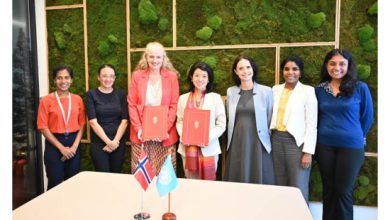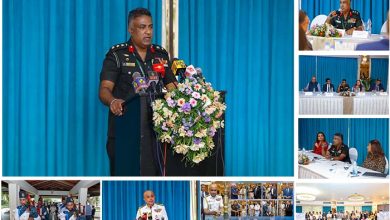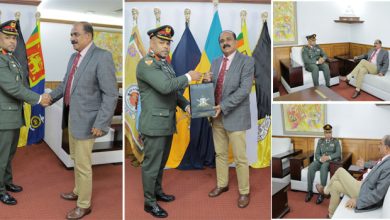Why Do We Need Sanitary Landfills to Manage Waste ?
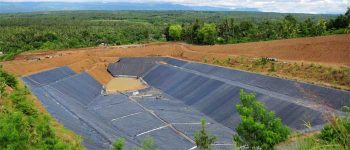
Sri Lanka generates around 9810.93 Metric Tons of waste per day and 3767.11 MT is collected daily by Local Authorities etc. Per capita waste generation in Sri Lanka is about 0.5 Kg per day where plastic waste generation is about 400 MT per day.
The National Solid Waste Management Policy was developed by the Ministry of Environment in collaboration with the relevant stakeholders in 2007. This was recently updated to include liquid and gaseous waste, and to address other emerging waste issues including identification of roles and responsibilities of different stakeholders in waste management. This updated policy was approved by the Cabinet of Ministers recently.
Ministry of Provincial and Local Government and the local authorities are the key responsible agencies for waste management in the country under the legislation, Ministry of Environment is responsible in development of policies, and inter-sectoral co-ordination, whereas the Central Environmental Authority is responsible in implementing the legislation and provision of technical guidance. At present Ministry of Mega polis and Western Development is engaged in implementing mega waste management projects. In addition Board of Investment (BOI) is responsible in attracting foreign investors and investments for waste management.
Waste segregation is the key to waste management and National Colour Code on Waste management has to be followed to bring about t a uniform system within the country.
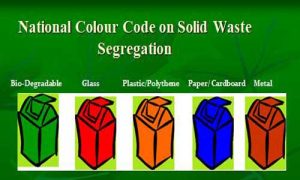
The waste management principle is known as the “Waste Management Hierarchy”. This has to be followed in waste management in order to maintain a healthy environment.
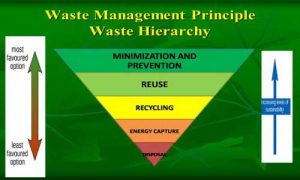
Waste avoidance and waste minimization is considered as the first step in the waste hierarchy. Waste could be minimize by taking several steps. For an example we can use cloth or a reusable bag for shopping to avoid bringing in many shopping bags home, which ends up as waste. In addition food waste could be minimized by serving ourselves the quantity that we can consume. These are some of the basic steps that we can take to avoid and minimize waste generation. There are many more actions that each individual can take to avoid and minimize waste generation.
Many items that we discard as waste, could be reused, which is the second step in waste management. Reusing items prevents or delays these items getting in to the waste stream. Third step is recycling. Used paper, plastics, metal and glass could be recycled, where a similar type of product could be produced using the waste items. As the fourth step energy could be produced from waste, where bio degradable waste or perishable waste could be converted to bio gas or methane gas converting it in to an energy source. In addition waste could be burnt to generate energy.
The above steps or activities, very well shows that a higher percentage of unwanted items that we throw away could be considered as valuable resources. Therefore by following the waste hierarchy or the waste management principle we can reduce the quantity of waste that we tend to dispose considering them as useless items or waste.
The items that cannot be reused, recycled or converted to energy or make use for any other purpose, which is known as “residual waste” has to be disposed in an environmental friendly manner. In order to dispose them in an environmental friendly manner a sanitary land fill is required.
A sanitary landfill is a technology that can be used to dispose residual waste safely. A sanitary landfill prevents soil, air and water pollution due to waste deposition.
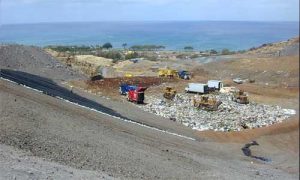
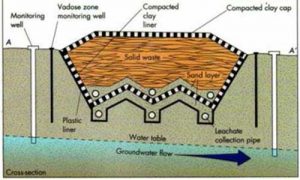
Sanitary landfill is not a place where waste is dumped on the bare land. Waste will be systematically deposited on several liners or layers placed on the soil. The liners could be geo- textile, High Density Poly Ethylene (HDPE) or a benthonite layer. These liners will prevent any harmful substances entering in to the soil. The underground water will be monitored periodically to ensure that the water is uncontaminated.
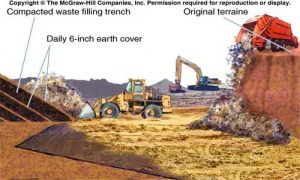
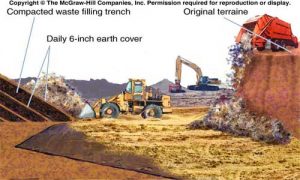
Waste is stacked in the sanitary landfill in layers and each layer is covered with a layer of soil around 06 inches in thickness. The waste water that is generated in the sanitary landfill will be treated or purified and discharged in to the environment to prevent soil pollution from waste water. The gases that emits form landfills, mainly bio –gas is collected and will be used as an energy source.
In general it takes 20-40 years to fill the landfill depending on its capacity. Once the landfill is full, it can be covered and the land could be used for some productive purpose.
Over the last decades there were many protests over establishment of sanitary landfills and so many foreign grants and other financial resources were wasted due to the protest of the people. In addition the waste issue got aggravated due to the non -establishment of sanitary landfills and the municipal solid waste was dumped on bare land polluting the environment. At present including the smaller waste dump sites there are around 390 dump sites in the country. These waste dumpsites needs to be rehabilitated in the future by establishing sanitary landfills.
Though many other high technologies are available for waste management, in the world at present , the technologies should be selected considering the waste composition of our country and economical viability of the technology.
Sri Lanka has several sanitary landfills, and there are two engineered landfills. They are Dompe Sanitary Landfill and Arawakkalu Sanitary Landfill. Besides them there are semi engineered landfills at Sandatenna in Nuwara – Eliya and Ampara. At present 04 more new sanitary landfills are designed to be constructed. At present one waste to energy project is under construction and expected to be completed next year. Therefore the support of the community is very much needed in establishment of sanitary landfills, as it prevents environmental pollution unlike just dumping waste on land.
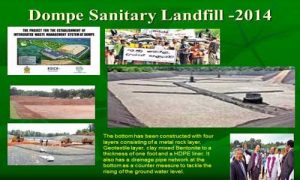
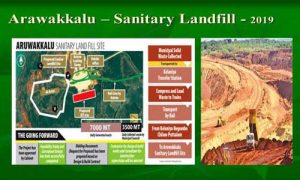
Sujeewa Fernando
Assistant Director
Environment Pollution Control & Chemicals Management Division
Ministry of Mahaweli Development and Environment



